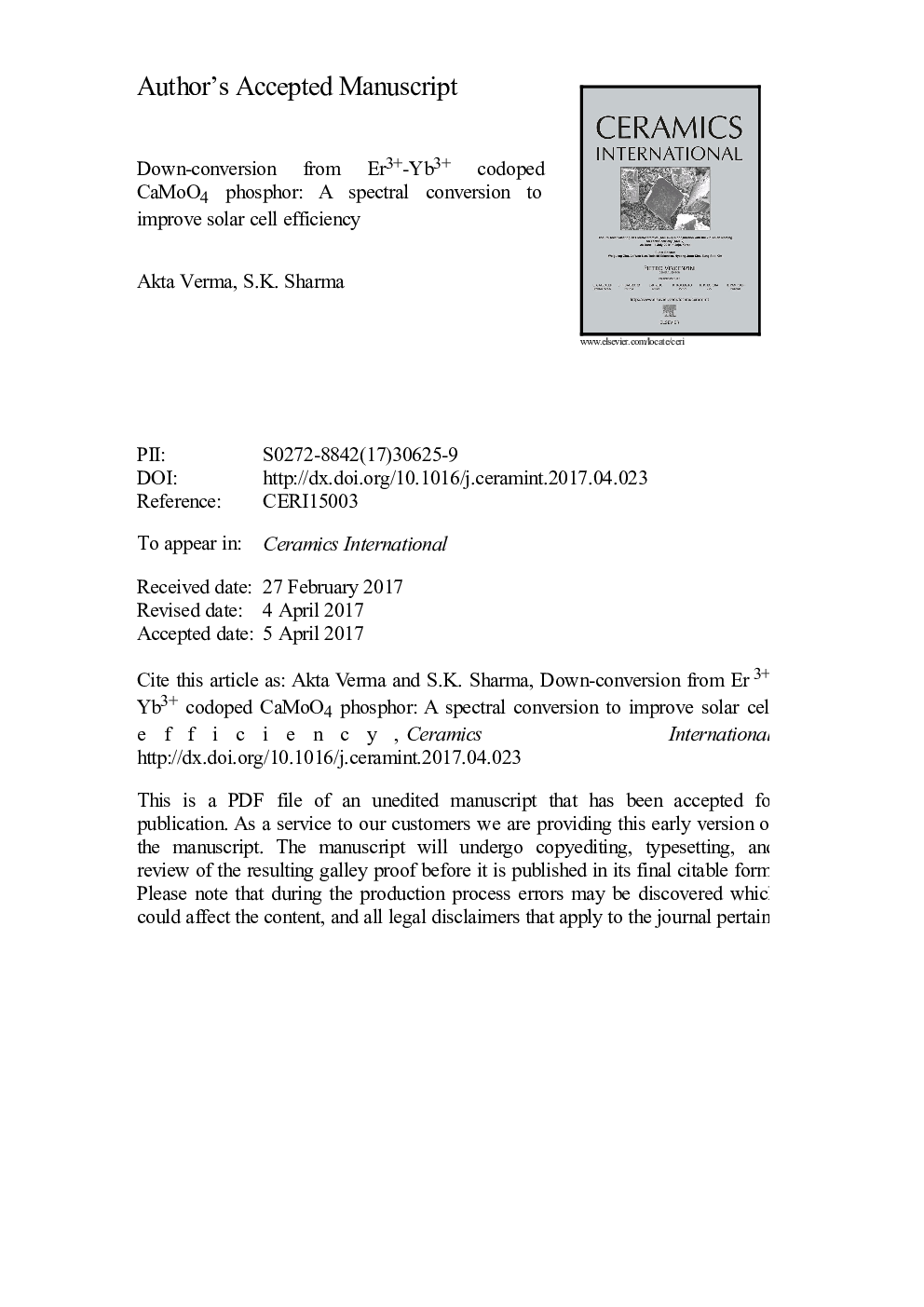| Article ID | Journal | Published Year | Pages | File Type |
|---|---|---|---|---|
| 5438353 | Ceramics International | 2017 | 25 Pages |
Abstract
The present paper focuses on near infrared (NIR) down-conversion photoluminescence (PL) properties by studying the energy transfer mechanism between Er3+ and Yb3+ in CaMoO4:Er3+, Yb3+ phosphors. We have successfully synthesized a series of Er3+ doped and Yb3+ codoped CaMoO4 phosphors by hydrothermal method. The down-conversion of Er3+-Yb3+ combination with CaMoO4 phosphor is designed to overcome the energy losses due to spectral mismatch when a high energy photon is incident on the Si-solar cell. The XRD, FESEM, EDX, PL, UV-Vis, Lifetime measurements were carried out to characterize the prepared down-converting phosphors. The crystallinity and surface morphology were studied by X-ray diffraction (XRD) and Field Emission Scanning Electron Microscopy (FESEM) techniques. The down-conversion PL spectra have been studied using 380Â nm excitation wavelength. The Er3+ doped phosphors exhibit hypersensitive emission at 555Â nm in the visible region due to 4S3/2â4I15/2 transition. The addition of Yb3+ into Er3+ doped CaMoO4 attribute an emission at 980Â nm due to 2F5/2â2F7/2 transition. The decrease in emission intensity in visible region and increase in NIR region reveals the energy transfer from Er3+ to Yb3+ through cross relaxation. The UV-Vis-NIR spectra shows the strong absorption peak around 1000Â nm due to Yb3+ ion. The lifetime measurement also reveals the energy transfer from Er3+ to Yb3+ ions. The maximum value of energy transfer efficiency (ETE) and corresponding theoretical internal quantum efficiency are estimated as 74% and 174% respectively.
Related Topics
Physical Sciences and Engineering
Materials Science
Ceramics and Composites
Authors
Akta Verma, S.K. Sharma,
